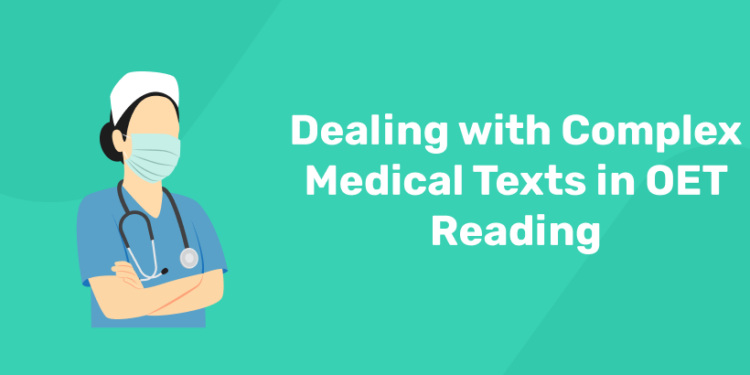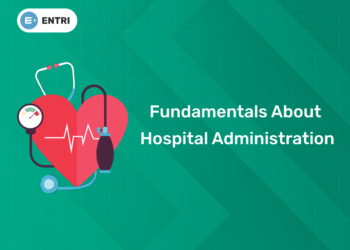Table of Contents
As a health professional, you need to read a range of different texts in the workplace. In a single shift, you may need to refer to a hospital policy, a memo, an email, a notice, a guideline, and more. These workplace communications are there to help you work according to standard and to keep up to date with workplace requirements. OET Reading is to understand how meaning transforms into logical thinking or information in lengthy texts.
How can you improve your performance on the OET Reading ?
To understand the perspective or opinion of the writer at various points in the text, you need to use inference skills. You will also exhibit your understanding of reference and linguistic features in texts and how they contribute meaning. You will likely not know or understand every word in the text and should develop strategies and skills to infer meaning or understanding of such ambiguity.
Reading various text types as part of your regular practice will help with this, provided you ensure some content is above your current reading level. Like Part B, in Part C, you have four options to choose from; you have to select the best depiction of the text contents as your answer. Part C intends your ability to identify detailed meaning and point of view in two texts on topics specifically related to healthcare professionals (800 words each). For each text content, you must answer eight four-option multiple-choice questions.
In OET reading , you must shade the circle next to the appropriate answer. If you write answers elsewhere in your booklet will not be considered. It is good to use the sample tests to familiarize yourself with the different task formats you might find in the OET.
Get your Desired OET Scores in Weeks! Get Free Demo Class Here!
Structure of OET Reading Test
1: What is the primary purpose of a patient’s discharge summary?
The OET Reading sub-test consists of three parts, and each part contains two to three texts. The texts in each part are related to healthcare topics, such as patient information, healthcare policies, and research findings. The texts may be in different formats, such as diagrams, charts, graphs, or tables.
The OET Reading sub-test assesses the test-taker’s ability to read and comprehend different types of texts related to healthcare, and it is important for healthcare professionals who wish to work or study in an English-speaking environment to achieve a high score in this sub-test.
In Part A, test-takers are presented with four short texts, each containing multiple-choice questions. The texts in Part A are designed to test the test-taker’s ability to identify and grasp specific information from the text.
In Part B, test-takers are presented with two longer texts, each containing six short-answer questions. The texts in Part B are designed to test the test-taker’s ability to understand and summarize the main ideas of the text.
In Part C, test-takers are presented with one longer text, followed by eight multiple-choice questions. The text in Part C is designed to test the test-taker’s ability to understand the text in detail and interpret the writer’s opinion or attitude.
Crack OET & Boost Your Healthcare Career!
OET Coaching by Entri App: Get expert guidance, practice with real exam scenarios, and achieve your target score to advance your healthcare career.
Join Now!Shortcuts to Help you Improve your OET Reading skills
How to improve oet reading?
- Skim through the text first:Before you start reading the text, take a quick look at the headings, subheadings, and any images or diagrams that may be included. This will give you an idea of what the text is about and help you focus on the important information.
- Identify keywords: As you read, try to remember the main idea of the text and it can help you identify the correct answers more easily.
- Pay attention to the question type: OET Reading questions can vary in type, so make sure you understand the question before you start looking for the answer. Some questions may ask you to identify specific information, while others may require you to make inferences or draw conclusions.
- Use context clues: If you come across a word you don’t know, try to use the context to help you understand its meaning. Look for clues in the surrounding sentences and paragraphs that may give you a hint.
- Practice, practice, practice: The more you practice OET Reading, the better you will become. Try to do as many practice tests as possible to get used to the format and types of questions you will encounter on test day.
- Do not waste time: OET Reading is timed, so make sure you don’t spend too much time on any one question. If you are unsure of an answer, move on and come back to it later if you have time.
By following these tips and practicing regularly, you can improve your OET Reading skills and increase your chances of success on test day
The Occupational English Test (OET) Reading test assesses your ability to understand and interpret professional health-related texts. To score well in the test, you need to avoid some common mistakes.
Elevate your OET scores with Entri Expert Team! Join for Free Demo Class!
Common Mistakes in OET Reading
- Not understanding the instructions: Before starting the test, carefully read the instructions provided. Make sure you understand the format of the test and the types of questions that will be asked.
- Not managing your time effectively: The OET Reading test is timed, and you will have only a limited amount of time to complete each task. Make sure you manage your time effectively and don’t spend too much time on any one question.
- Not reading the questions carefully: Read the questions carefully before attempting to answer them. Make sure you understand what is being asked and what type of answer is required.
- Not reading the text thoroughly: Read the text thoroughly before attempting to answer the questions. Make sure you understand the main ideas, key details, and arguments presented in the text.
- Not using context clues: Use context clues to help you understand unfamiliar words and phrases. Look for clues in the text to help you understand the meaning of a word or phrase.
- Making assumptions: Avoid making assumptions about the text or the questions. Stick to the information presented in the text and the instructions provided.
- Not checking your answers: Before submitting your answers, make sure you check them carefully. Make sure you have answered all the questions and that your answers are clear and accurate.
By avoiding these common mistakes, you can improve your chances of performing well in the OET Reading test.
Rules & Regulations for OET Reading
To take the OET Reading test, you must adhere to the following rules and regulations:
- Test Materials: You are provided with an OET Reading booklet and an answer sheet. You are not allowed to bring any additional materials, such as dictionaries or other reference materials.
- Identification: You must present a valid form of identification, such as a passport or national identity card, when you arrive at the test center.
- Timing: The Reading test lasts for one hour and is timed. You will be given a specific amount of time for each task, and you must complete each task within the time limits.
- Instructions: You must read the instructions for each task carefully and follow them closely. Failing to follow the instructions may result in a lower score.
- Answering: You must answer all questions on the answer sheet with a pencil. You must not use pens, highlighters, or any other writing materials.
- Leaving: You are not allowed to leave the test room during the Reading test unless there is an emergency.
- Cheating: If you are found to be cheating, your test results may be invalidated, and you may be banned from taking the test again.
By following these rules and regulations, you can ensure that you have a smooth and successful experience taking the OET Reading test.
Crack OET & Boost Your Healthcare Career!
OET Coaching by Entri App: Get expert guidance, practice with real exam scenarios, and achieve your target score to advance your healthcare career.
Join Now!OET Reading Tips and Tricks
To perform well in the OET Reading test, you may find the following tips and tricks helpful:
- Practice Reading Health-Related Texts: The OET Reading test assesses your ability to understand and interpret professional health-related texts. Therefore, practice reading health-related articles, journals, and reports to improve your familiarity with the language used in these texts.
- Skim and Scan the Text: Use skim and scan techniques to quickly identify the main ideas, keywords, and relevant details in the text. This will help you save time and focus on the questions that require more attention.
- Read the Questions Carefully: Read the questions carefully to understand what is being asked and what type of answer is required. Also, pay attention to the number of questions and the allocated time to each task.
- Identify Keywords: Identify keywords in the questions and use them to search for relevant information in the text. This will help you find the information you need more quickly and accurately.
- Focus on the Objective: The OET Reading test is designed to assess your ability to understand and interpret health-related texts. Therefore, focus on the objective of each task and avoid going off-topic.
- Manage Your Time Effectively: Manage your time effectively and ensure that you allocate sufficient time to each task. Remember that you are working under timed conditions, so be aware of the time and move on to the next task if necessary.
- Check your Answers: Before submitting your answers, check them thoroughly for accuracy, clarity, and completeness. Make sure that you have answered all questions and that your answers are legible.
By following these oet reading tips and tricks, you can improve your performance in the OET Reading test and achieve your desired score.
How To Score High in Reading
1. Make use of background knowledge
The first point to make in relation to reading section B is that all of the six texts will be texts which should be familiar to healthcare professionals from a range of backgrounds. It consists of genres such as hospital notices, instruction manuals, and guideline extracts.
2. Read the question and each of the options carefully
Once you have orientated yourself to the main topic of the text. You can now start to read the questions and options A to C in detail.
3.Be aware of the paraphrase
For both detail and gist questions, a large amount of paraphrasing is likely to apply when working out which option is correct.
For example, if we go back to our question on the Blood Pressure Monitor. Let’s imagine the answer to that was (B) may not work correctly in close proximity to some other devices.
This sentence gives us our answer: close proximity has become “within 7 metres”. Some other devices has been specified to refer to “cellphones or other devices”. This may not work correctly is assumed by the fact that “care should be taken to avoid the use of the monitor within 7 metres”. Why should such care be taken unless it will affect the working of the monitor? So, this is the sort of process you will have to undergo to make sure you are answering the questions correctly.
Elevate your OET scores with Entri Expert Team! Join for Free Demo Class!
OET Reading : Strategies for Success
Achieving success in the OET Reading sub-test hinges upon the implementation of effective strategies that enhance both efficiency and comprehension. These strategies act as guiding principles, illuminating the path toward mastering the intricate challenges posed by this assessment. The foremost strategy involves honing the skills of skimming and scanning, empowering candidates to swiftly navigate through texts while pinpointing essential information. A dedicated focus on expanding medical vocabulary emerges as the second cornerstone, enabling candidates to seamlessly grapple with the specialized terminology inherent to healthcare documents. Active reading practices, such as annotation and summarization, form the third pillar, fostering engagement and retention of crucial details.
Equally vital is the art of time management, where candidates judiciously allocate time across different sections based on question complexity. Lastly, unwavering practice with official OET materials and sample tests stands as the ultimate strategy, providing a simulated environment to refine skills and cultivate familiarity with the test format. By weaving these strategies into their preparation, candidates can unlock the doors to success in the OET Reading sub-test and pave the way for effective healthcare communication. To excel in the OET Reading sub-test, it’s essential to adopt effective strategies:
Skim and Scan
Practice skimming and scanning techniques regularly to improve your speed and accuracy in locating key information within texts. Skimming helps you grasp the main idea while scanning helps you find specific details quickly. Mastering the art of skimming and scanning is an indispensable skill for anyone navigating the seas of information, especially within the context of the OET Reading sub-test. Regular practice of these techniques serves as a compass guiding test-takers towards enhanced efficiency and precision in swiftly deciphering textual landscapes. Skimming, the first facet, functions as a telescopic view, enabling readers to swiftly traverse the surface of a text, capturing its essence and primary themes. This method allows candidates to swiftly identify the overarching message, providing a solid foundation upon which to build further understanding.
Complementing skimming is the technique of scanning, a finely tuned radar system that aids in swiftly pinpointing specific details embedded within the text. By applying this technique, candidates can effectively zero in on crucial pieces of information, ensuring they efficiently answer questions that require precise data. Through dedicated practice of skimming and scanning, candidates not only enhance their ability to navigate the intricacies of healthcare-related texts but also cultivate a strategic advantage in the OET Reading sub-test, propelling them toward success.
Focus on Vocabulary
A robust command over medical vocabulary stands as an anchor within the tempestuous waters of the OET Reading sub-test. Given the intricately woven tapestry of healthcare-related texts that characterize this assessment, a concerted focus on expanding one’s medical lexicon becomes an imperative strategy. By conscientiously cultivating an arsenal of medical terms and their nuanced meanings, candidates equip themselves to unravel the dense terminology that often fills the pages of patient case notes, research articles, and clinical guidelines. Embracing a habitual practice of learning and reviewing medical terms is akin to forging a key that unlocks the intricate locks of comprehension, allowing candidates to effortlessly navigate the specialized language intricacies intrinsic to the healthcare realm.
The diligence not only empowers candidates to engage with the subtleties of medical discourse but also bolsters their ability to seamlessly interpret and decipher the intricate web of information that unfolds within the OET Reading sub-test. In essence, dedicating time and effort to enriching medical vocabulary is akin to laying a solid foundation upon which candidates can construct their path towards excellence in healthcare communication. Enhance your medical vocabulary as many texts in the OET Reading sub-test are healthcare-related. Make a habit of learning and reviewing medical terms and their meanings.
Practice Active Reading
Engage in active reading by highlighting or underlining key points, jotting down notes, and summarizing the main ideas of each text. Active reading emerges as a dynamic compass guiding candidates through the labyrinthine passages of the OET Reading sub-test. It transcends the realm of passive absorption, ushering test-takers into an interactive engagement with the textual landscape. By deploying techniques such as highlighting or underlining key facets, candidates harness the power of visual cues to accentuate pivotal information, lending it prominence and imprinting it in memory. The act of jotting down notes akin to forging a personal roadmap, encapsulating insights, connections, and queries that spring forth during the reading journey. The pinnacle of this approach lies in the art of summarization, wherein candidates distil the textual tapestry into concise yet comprehensive capsules that encapsulate the main ideas.
The active approach transforms reading into intellectual discourse, fostering retention and comprehension that extend beyond surface understanding. As the OET Reading sub-test unfurls, the dividends of active reading manifest as an arsenal of insights, empowering candidates to seamlessly navigate questions and offer cogent responses that mirror their profound grasp of healthcare discourse. In the tapestry of OET preparation, active reading stitches together a fabric of heightened engagement and comprehension, enabling candidates to confidently unravel the complex narratives woven within the test’s healthcare-oriented texts. This approach will help you retain information and answer questions effectively.
Time Management
Allocate a specific amount of time to each part of the sub-test based on the number of questions and their complexity. In the dynamic arena of the OET Reading sub-test, adept time management emerges as a pivotal compass steering candidates toward success. Like a seasoned conductor orchestrating a symphony, judiciously allocating time to each segment of the sub-test based on question quantity and complexity is an art that can significantly impact performance. By adhering to this strategic approach, candidates harness their precious minutes to extract maximum value from each question. A calculated distribution of time ensures a comprehensive engagement with the entire test, preventing the pitfall of getting entangled in one section at the expense of others. Within this framework, the principle of prioritization comes to the fore, directing candidates’ focus toward questions that carry higher point values. Yet, the true essence of time management reveals itself in its flexibility—a candid acknowledgement that time is a finite resource. This understanding empowers candidates to gracefully address challenging questions, leaving room for subsequent revisits, and rectifying any gaps that may emerge.
As the clock ticks in the OET Reading sub-test, skilful time management crafts an orchestration of efficiency, allowing candidates to traverse the textual terrain with poise, tackle complexities with precision, and ultimately emerge triumphant with a comprehensive and well-executed response to the examination’s array of healthcare-related challenges. Prioritize questions that carry higher marks and return to challenging questions if you have time left.
Book a Free Demo Class with Entri and unleash your dreams!
Practice, Practice, Practice
Utilize official OET practice materials and sample tests to simulate the actual test conditions. The adage practice makes perfect holds resoundingly true when venturing into the realm of the OET Reading sub-test. A strategic commitment to relentless practice forms the cornerstone of preparation, an approach akin to sharpening one’s tools before a significant endeavour. The utilization of official OET practice materials and sample tests emerges as a potent technique, akin to a dress rehearsal that mimics the actual test conditions. By immersing themselves in these curated resources, candidates embrace a simulated environment where the nuances of format, style, and complexity mirror the authentic examination. This immersive experience refines candidates’ ability to navigate through the intricacies of healthcare texts, bolstering reading skills through repeated exposure.
The echoes of practice reverberate, fostering familiarity with the test’s ebb and flow, and nurturing confidence in tackling questions that demand critical analysis and comprehension. This iterative journey enhances not only proficiency in medical vocabulary and content but also sharpens the cognitive dexterity required to unearth key information swiftly and accurately. In essence, the practice becomes a conduit for transformation—an evolution from uncertainty to mastery, from hesitancy to certainty. Thus, through the cultivation of this relentless practice regimen, candidates carve a path toward excellence, poised to unravel the diverse dimensions of the OET Reading sub-test with unwavering precision and acumen. Regular practice will familiarize you with the format and improve your reading skills.
Understanding the Tips for OET Reading
The most up-to-date and effective study materials for the OET Reading is offered by Entri. Our regular and online sessions are taught by skilled instructors who can advise students using the most recent OET reading tips. Method lessons, practice tests, and sample tests with feedback make OET reading preparation easy.
FAQs?
1. What is the OET Reading sub-test for Nurses?
Ans. The OET Reading sub-test for nurses assesses a candidate’s ability to comprehend and interpret various medical texts commonly encountered in the healthcare profession. It consists of three parts, each containing different types of reading tasks.
2. What types of texts are included in the OET Reading sub-test for Nurses?
Ans. The texts used in the OET Reading sub-test for nurses are authentic and relevant to the healthcare profession. They may include excerpts from medical journals, patient case studies, healthcare policies, reports, and other healthcare-related materials.
3. How can nurses prepare for the OET Reading sub-test?
Ans. Nurses can prepare for the OET Reading sub-test by practicing with authentic OET sample materials and past papers. Familiarize yourself with the test format, and practice skimming and scanning techniques to quickly identify key information in the texts. Build your medical vocabulary to better understand the specialized terminology used in healthcare-related passages.
4. Can I take notes during the OET Reading sub-test for Nurses?
Ans. Yes, you are allowed to take notes during the OET Reading sub-test for nurses. Effective note-taking can help you summarize and retain essential information from the texts, especially during the Part C (Gap Fill) task.
5. Are there any specific strategies for tackling the OET Reading sub-test for Nurses?
Ans. Yes, some strategies that can help you succeed in the OET Reading sub-test for nurses include:
- Skim the text quickly before reading the questions to get a general understanding of the content.
- Underline or highlight key information while reading the questions to locate the relevant answers faster.
- Pay attention to the context and use of medical vocabulary in the passages.
- Practice time management to ensure you have sufficient time for each part.
6. How is the OET Reading sub-test scored for Nurses?
Ans.The OET Reading sub-test is scored based on accuracy and appropriateness of the answers.
Each part carries equal weight in the final score, and the overall score is reported on a scale from 0 to 500.
7. Can I use a dictionary during the OET Reading sub-test for Nurses?
Ans. No, candidates are not allowed to use any dictionaries or reference materials during the OET Reading sub-test. The test aims to assess your ability to comprehend and interpret medical texts without external assistance.
8. How can I improve my reading speed and comprehension for the OET Reading sub-test?
Ans. To improve reading speed and comprehension, practice regularly with a variety of medical texts. Gradually increase the complexity of the passages you read and focus on identifying main ideas, key details, and the structure of the text. Additionally, practice time-bound exercises to improve your reading speed without compromising comprehension.












